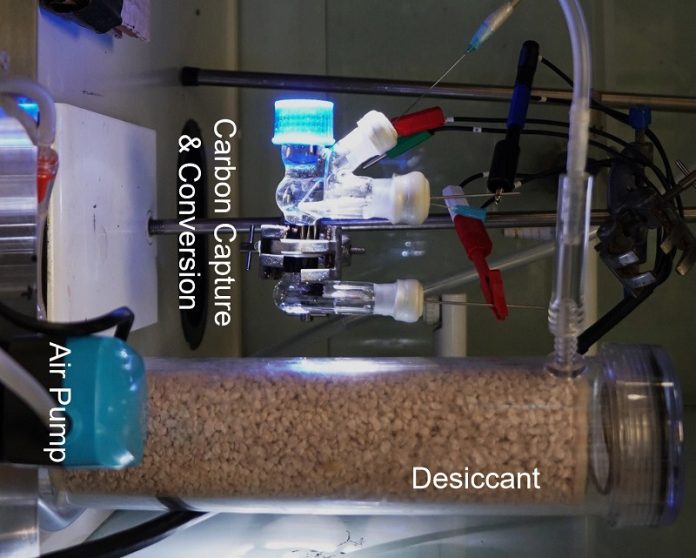
Researchers at the University of Cambridge have developed an innovative solar-powered reactor that can capture carbon dioxide (CO2) from industrial processes or directly from the air and convert it into clean, sustainable fuels.
By harnessing the energy from the sun, this breakthrough technology offers a promising solution for reducing carbon emissions and transitioning to a circular economy.
Let’s explore how this exciting development works in simpler terms.
A group of scientists led by Professor Erwin Reisner from the University of Cambridge has made significant progress in developing clean, sustainable fuels inspired by photosynthesis.
Using an artificial leaf concept, which mimics the way plants convert sunlight into food, they have created a solar-powered reactor that can transform CO2 and plastic waste into valuable chemical products and fuels.
Traditionally, the researchers had used concentrated CO2 from a cylinder in their experiments.
However, to make this technology practical, it needed to capture CO2 from real-world sources, such as industrial exhaust or directly from the air. This posed a significant challenge because CO2 is just one of many molecules in the air we breathe.
The team found inspiration in carbon capture and storage (CCS), a process that captures CO2 and stores it underground.
They aimed to develop a more sustainable approach by capturing and utilizing CO2, instead of merely storing it.
By converting CO2 into useful products, they could eliminate the need for fossil fuels.
To achieve this, the researchers adapted their solar-driven technology to selectively trap CO2 from the air or flue gas, while allowing other harmless gases to escape.
They accomplished this by bubbling air through an alkaline solution, which concentrated the CO2 for easier processing.
The solar-powered system consists of a photocathode and an anode, housed in two compartments.
In one compartment, captured CO2 is converted into syngas, a basic fuel. In the other compartment, plastic waste is transformed into valuable chemicals using sunlight.
An interesting aspect is that the plastic waste donates electrons to CO2, facilitating its conversion into glycolic acid, widely used in the cosmetics industry.
This innovative system not only provides a method to capture CO2 from the air but also utilizes plastic waste, creating a two-fold benefit. Instead of storing CO2 underground as in CCS, the captured CO2 is turned into clean fuel, which reduces reliance on fossil fuels and helps combat climate change.
The researchers are currently working on an improved bench-top demonstrator device to showcase the efficiency and practicality of this technology. Their goal is to highlight the potential of combining direct air capture with CO2 utilization as a path toward achieving a zero-carbon future.
The development of a solar-powered reactor that captures CO2 from the air and transforms it into clean, sustainable fuels represents a significant milestone in the quest for a greener future.
By utilizing the energy from the sun and repurposing plastic waste, this groundbreaking technology offers a promising solution for reducing carbon emissions and eliminating the need for fossil fuels.
With further advancements, this technology could revolutionize fuel production and contribute to a more sustainable and environmentally friendly world.
The study was published in the journal Joule.



